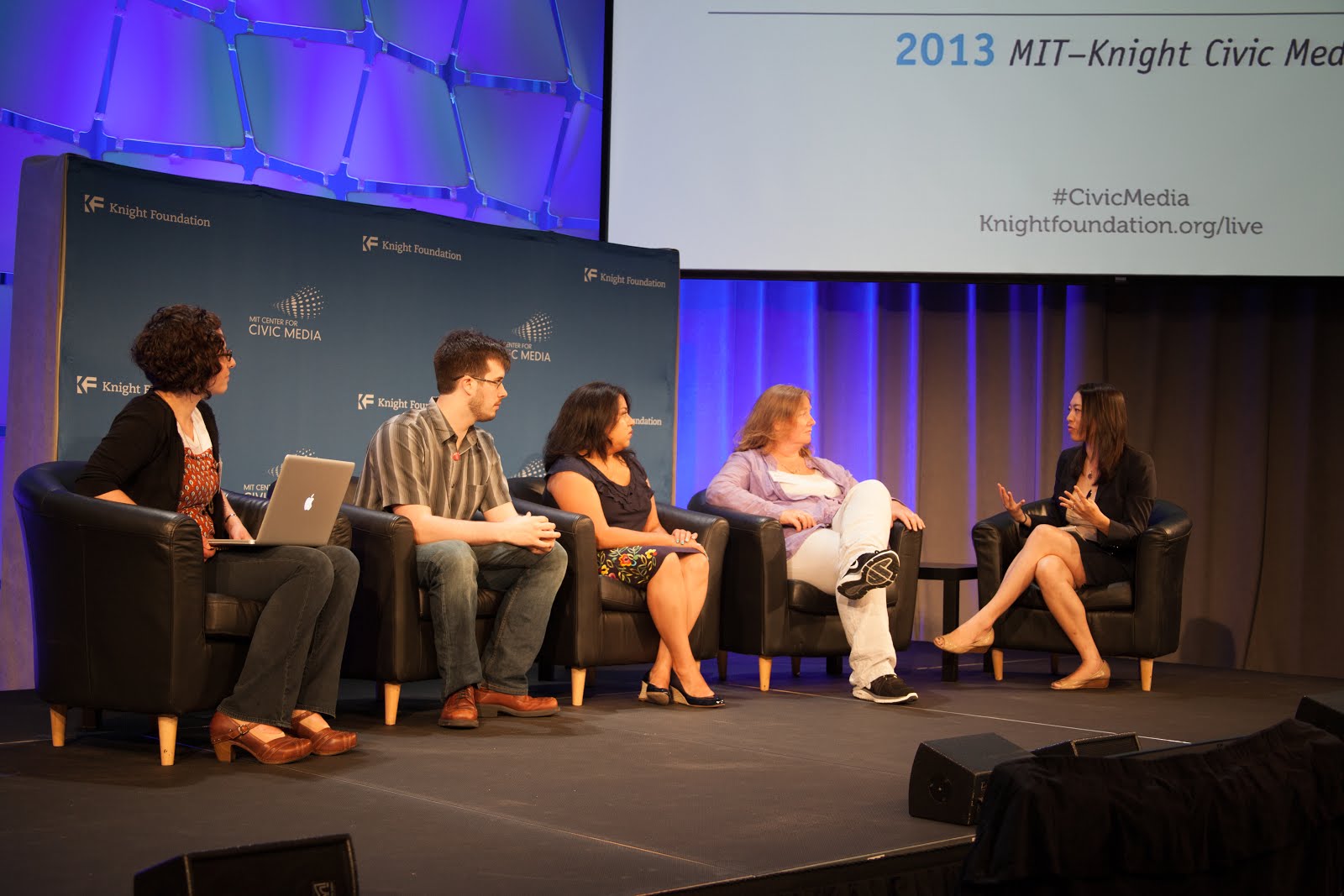
4 ideas to disrupt newsrooms
Above from left to right: Jennifer Brandel, Dan Schultz, Laura Ramos, Emily Bell and Elise Hu.
Journalists, academics and digital storytellers recently shared their best ideas on how to disrupt newsrooms at the MIT-Knight Civic Media Conference in Cambridge, Mass.
The panel conversation, moderated by Elise Hu, digital editorial coordinator at NPR, focused on how these disruptions might help newsrooms become better drivers of civic engagement and innovation.
Ideas included:
- Measure things differently: We’re counting things the wrong way, said Laura Ramos, vice president of innovation and design at Gannett. “We’re measuring ourselves incorrectly by looking at things like awards, bylines, Facebook shares, pageviews and unique visitors,” she said. These metrics don’t really show what content providers are actually trying to do, which is to engage with their communities. None of those things actually tell organizations if they’re helping people live their lives better, she said.
- Change the content management system: Dan Schultz, a Knight-Mozilla Fellow, thinks too much time is spent maintaining legacy content management systems in newsrooms. Instead, he suggests having all the developers draw straws; whoever gets the shortest one is the only person responsible for maintaining that system. The rest should be free to spend their time adding new features, fixing bugs and building more interactive and innovative products.
- Subvert the typical editorial process: Give people in your community the opportunity to ask questions, curate content and be involved in the editorial process, advised Jennifer Brandel, senior producer of CuriousCity and interactive at WBEZ. For example, CuriousCity allows users to vote for which stories they want covered, grants access to reporters’ notebooks and gives the community a chance to suggest questions to reporters. That sort of shift in newsgathering is an idea that Emily Bell, director of the Tow Center for Digital Journalism at Columbia University, touched on when she observed that the physical makeup and feel of newsrooms are changing.
- Rethink publishing: When it comes to publishing content, Brandel said there “needs to be more of an emphasis on creativity” in digital storytelling. She encouraged people to think about the online presentation of content first and to experiment with audio, video and other multimedia. This often means more collaboration among journalists, developers and designers, she said. For example, to answer a reader question about how neighborhoods are formed in Chicago, a CuriousCity cross-platform project resulted in a colorful comic depiction of their investigation.
Panelists also shared thoughts on what non-news organizations (such as tech startups and non-profits) are doing right and what possible lessons they might provide journalists. Ramos cited AirBnB as a place where, tech, design and storytelling are expertly combined. Brandel said The National Film Board of Canada and Zeega do interactive storytelling well. Bell added that she’s intrigued by how creations like Uber can give users what they want at the time they need it the most.
Schultz praised the Knight-Mozilla OpenNews project for its work aggregating lessons around journalism tools and tech: “What the industry needs is a community of developers working on real-world challenges and how to solve them,” he said. “We can learn from each other and not have to reinvent the wheel.”
By Elizabeth R. Miller, communications associate at Knight Foundation
Recent Content
-
Journalismarticle ·
-
Journalismarticle ·
-
Journalismarticle ·


